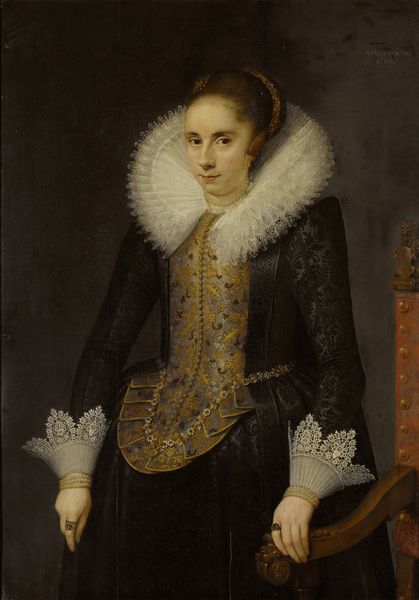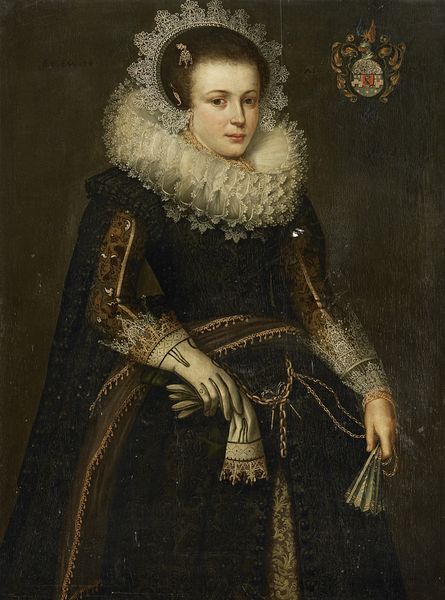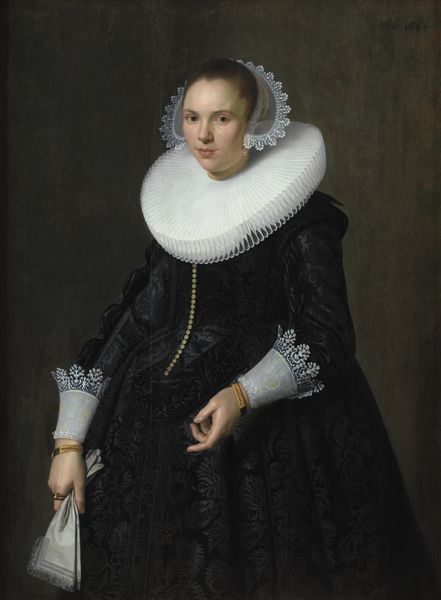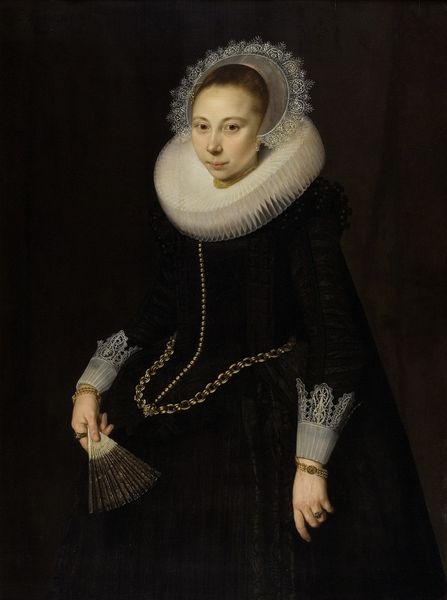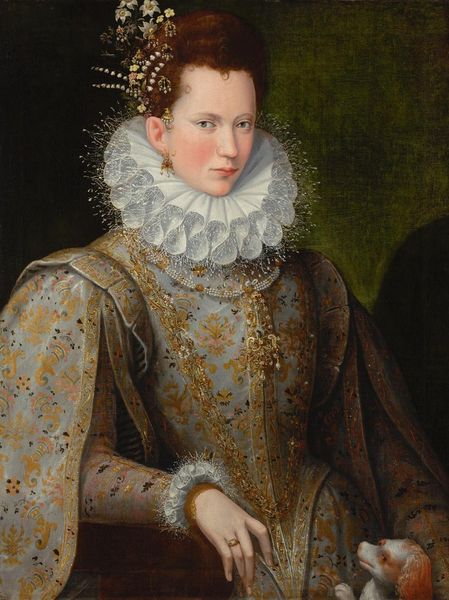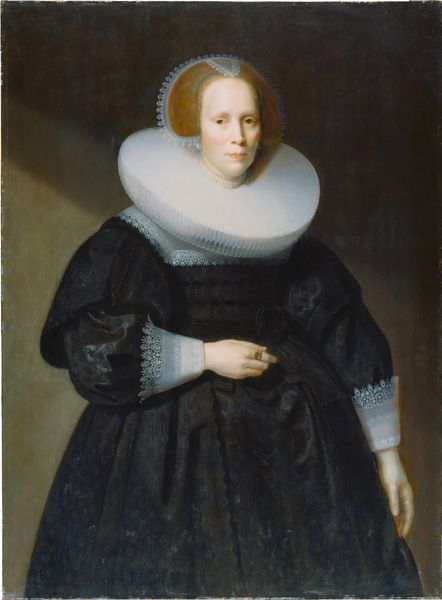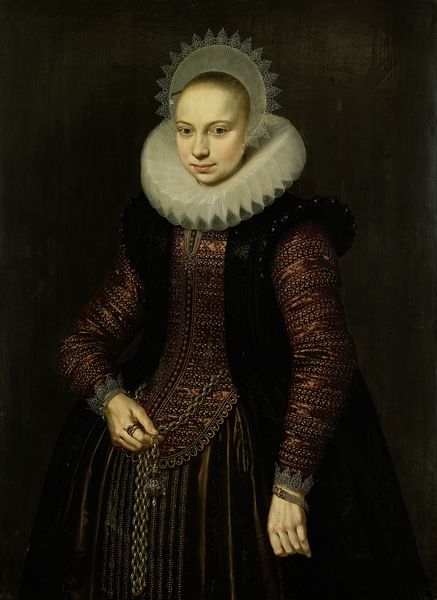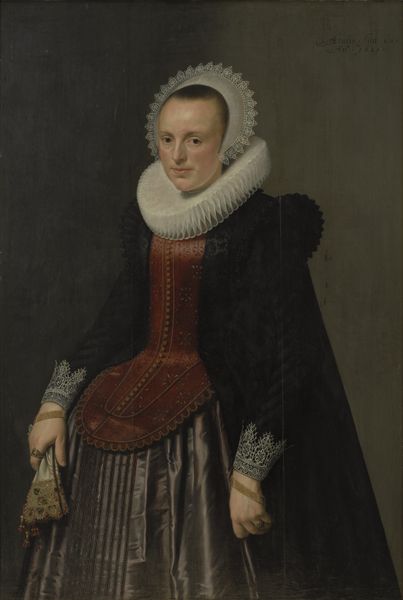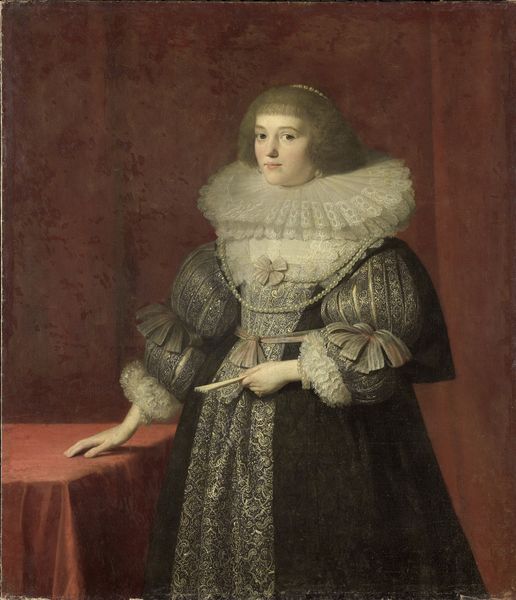
#
portrait reference
#
portrait head and shoulder
#
animal portrait
#
animal drawing portrait
#
portrait drawing
#
facial portrait
#
lady
#
portrait art
#
fine art portrait
#
celebrity portrait
#
digital portrait
Dimensions: 107 x 96 cm
Copyright: Public domain
Curator: Rubens' "Portrait of a Young Woman with a Rosary," painted around 1610, really throws down a captivating image of youthful grace and pious reflection. It's kind of lovely, actually. What jumps out at you? Editor: That massive ruff! It’s almost architectural, completely framing and dominating her face. She seems both confined and elevated by it. Like a halo made of starched lace. Curator: A bit constricting, isn’t it? Perhaps a little oppressive, hinting at societal expectations? Editor: Exactly. The rosary she holds seems almost secondary, despite the title. It suggests piety as an outward display. Look at how the light catches the metallic threads of her corset, reinforcing wealth and status as vital to her identity. Curator: Yet her eyes suggest a vulnerability. Rubens always had a way of making the surface details interesting, even breathtaking, while quietly revealing some deeper emotional undercurrent. She's got these haunted, faraway eyes that make me wonder. Editor: I wonder too! Her expression isn't straightforward. She isn’t defiant, but not entirely submissive either. She almost seems to be evaluating the viewer as much as she is being evaluated. It hints at some untold story, or maybe a negotiation of power. The ruff is also important—it sets a fashion standard, like early modern conspicuous consumption. Curator: Right? You can almost see the seeds of future self-awareness blossoming right there in her gaze. It's beautiful, seeing such vulnerability in someone adorned in finery and seemingly privileged. She’s more than just the sum of her status symbols, that’s for sure. It's quite touching. Editor: Indeed. The painting operates on multiple layers of meaning—spiritual, societal, personal. It reflects both the era's fixation on appearances and a subtle recognition of individual identity struggling to emerge. Curator: What’s fantastic here is the timelessness. We are still trying to reconcile inner life with outward projection; Rubens just had an extraordinary talent for showing us the humanity inside the frills. Editor: Well, I see those frills differently now. It seems we are both seeing the beauty and humanity—but just different angles of it.
Comments
No comments
Be the first to comment and join the conversation on the ultimate creative platform.
